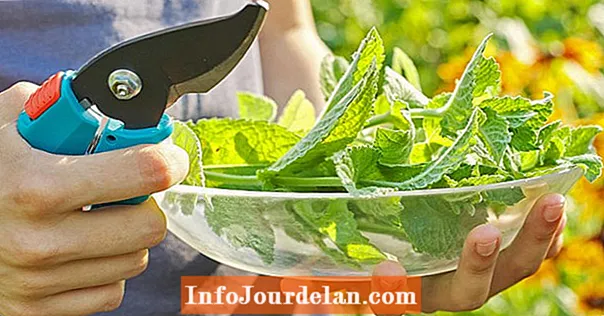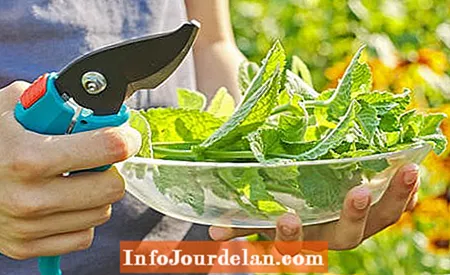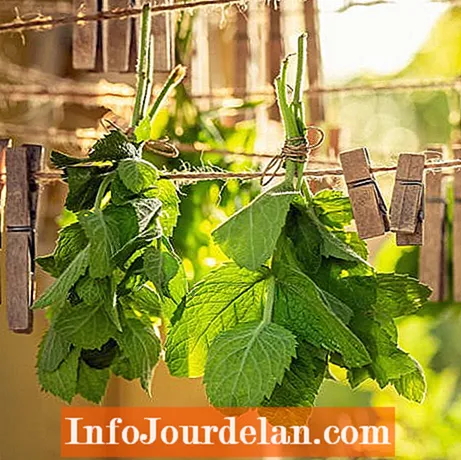
Do you know when is the best time to harvest mint? We'll tell you - and also how to best proceed with the harvest.

If you grow mint in your own garden, you can harvest it from spring to autumn - be it for fresh mint tea, delicious cocktails or as a cooking ingredient. But where do you use the scissors, when is the best time for it and what is the best way to store the peppermint afterwards?
In principle, you can harvest mint throughout the season, from spring to autumn - whenever you want to use the fresh herb in the kitchen. The young shoot tips are usually harvested and the plants will soon continue to grow. Cut the mint for harvest, for example because you want to dry larger quantities for winter storage, but there are a few things to consider: It is best to harvest the shoots between June and July before the plants bloom. Because shortly before flowering, the content of healthy ingredients such as essential oils, tannins or flavonoids is highest. Also, choose a dry, sunny day and harvest in the late morning. In this way you can ensure that the harvested plant parts have an optimal concentration of the ingredients. When pruning the harvest, the shoots are cut back by about half so that the plants can still regenerate for further harvests in summer. Use clean, sharpened secateurs, larger household scissors or a herbal sickle.

With the main harvest, make sure to leave some of the mint shoots completely standing so that the plants can form flowers. These are popular bee food well into late summer and magically attract many other flower visitors among the insects. In addition, the small, mostly light purple flowers are edible and have a delicate mint taste. You can use them to decorate desserts or salads, for example.
Harvesting mint: the essentials in brief- Mint can be harvested from spring until the first frost.
- The best time to harvest is before flowering (June / July). Then the leaves contain the most essential oils.
- Cut back the shoots by about half, then the plant can regenerate quickly.
- Do not harvest all of the shoots; let some stand and bloom. The bees will thank you!
- Use sharp secateurs or a sickle of herbs for harvesting.
After harvesting, you should use your mint quickly, preferably on the same day. If necessary, you can store the leaves in a shady place for a maximum of one day, but not longer, as otherwise the leaves will wither and lose their aroma. If you want to preserve the mint by drying it, you can hang the crop to dry in bouquets, depending on the space available, or you can separate the leaves from the stems and spread them out on grids or put them in an automatic dehydrator. The drying area should be warm and airy, but no more than 40 degrees Celsius. If mint is dried too hot, many essential oils are lost. Also avoid strong, direct sunlight. Only when the leaves rustle and are brittle is the mint dry enough to be poured into cans or other closable storage containers. In any case, keep the dried mint in a dark place.

By the way: you can simply fill small amounts of mint, for example for a refreshing summer cocktail, into ice cube molds with a little water and then freeze the mint. This is not only practical and gives the cocktails a fresh note, it also looks good.
There are several methods of propagating mint. If you want to have as many young plants as possible, you should not multiply your mint by runners or division, but by cuttings. In this video, MEIN SCHÖNER GARTEN editor Dieke van Dieken shows you what to watch out for when multiplying mint
Credits: MSG / CreativeUnit / Camera + Editing: Fabian Heckle